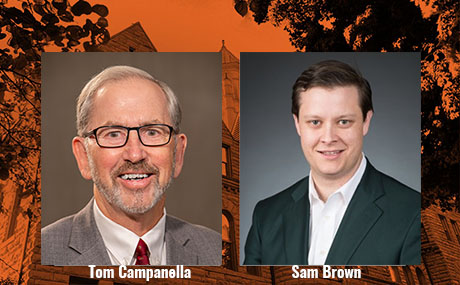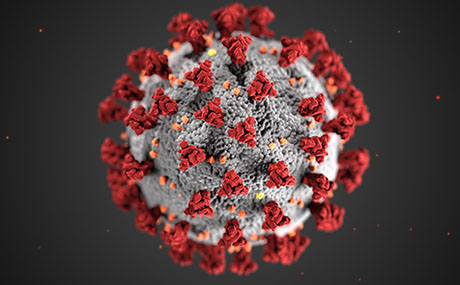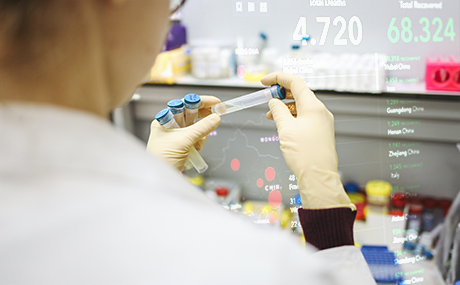 When COVID-19 rapidly spread around the world in the winter of 2019, no one knew the vital role that big data would play in understanding this novel disease.
When COVID-19 rapidly spread around the world in the winter of 2019, no one knew the vital role that big data would play in understanding this novel disease.
Global public health leaders quickly acknowledged the need to better manage and track the progression of the disease. In time, the experts in the medical field embraced the role of analytics in helping to solve the unknowns that they faced.
A recent event at Baldwin Wallace University examined the impact of data on healthcare, especially during the pandemic. "Analytics Summit: Transforming 'Traditional' Healthcare" was part of BW's Career Catalyst Series in partnership with the BW Healthcare MBA and featured insights from Tom Campanella, healthcare executive-in-residence at BW, and Sam Brown, vice president of operations and logistics at University Hospitals (UH).
Both speakers noted that the implementation of analytics in healthcare processes helped professionals to reimagine the approach of care to patients. They are now able to better understand how they deliver care, where they deliver care and how to prevent illnesses - the system's main goal.
Rapid progress in technology in recent years has given many workers access to tools that improve their everyday processes. There are more areas of research that have yet to be fully discovered and improved upon, but the accumulation of big data has already begun transforming healthcare.
 As the number of patients contracting COVID-19 surged, healthcare professionals were in need of tools that could help them better respond to the pandemic.
As the number of patients contracting COVID-19 surged, healthcare professionals were in need of tools that could help them better respond to the pandemic.
Some of the tools that were deployed included ways to track the number of COVID-19 cases, death rates, doubling rates, facility utilization, and testing capacity and utilization. Facilities also utilized a supply tracker that made it easier to track testing supplies, blood supplies and any other necessary equipment they needed.
Brown noted that the pandemic brought medical institutions such as Cleveland Clinic and UH together for the first time in 100 years due to the need for collaboration on next steps after the collection of data was complete.

One of the new tools these collaborating professionals have at their disposal is called Geo-MEDD. Geo-MEDD takes geo-coded information from testing and is able to identify index cases while utilizing census and clinical data. When a risk profile is done, the data obtained helps professionals better understand the likelihood of disease transmission and determine if additional resources are needed.
Using geospatial analytics and then tying that together with operational models helps to make a positive impact on communities served.
Brown explained, "It is an early smoke detector system. An index case would be reported, and depending on further transmission after risk assessment, further resources can be sent on location as a means of managing an outbreak in the community instead of filling up the local hospital." A prime example of this is in a care home where the risk of spread is high.
As tools like Geo-MEDD continue to evolve, the medical industry can continue to learn and make progress on combating the spread of COVID-19 and other disease and public health issues, too.
Being able to see data about cases and other key factors can all be applied to concerns such as influenza, opioid overdoses and infant mortality. Even though the usage of big data has come a long way, there are still many directions to explore and develop.